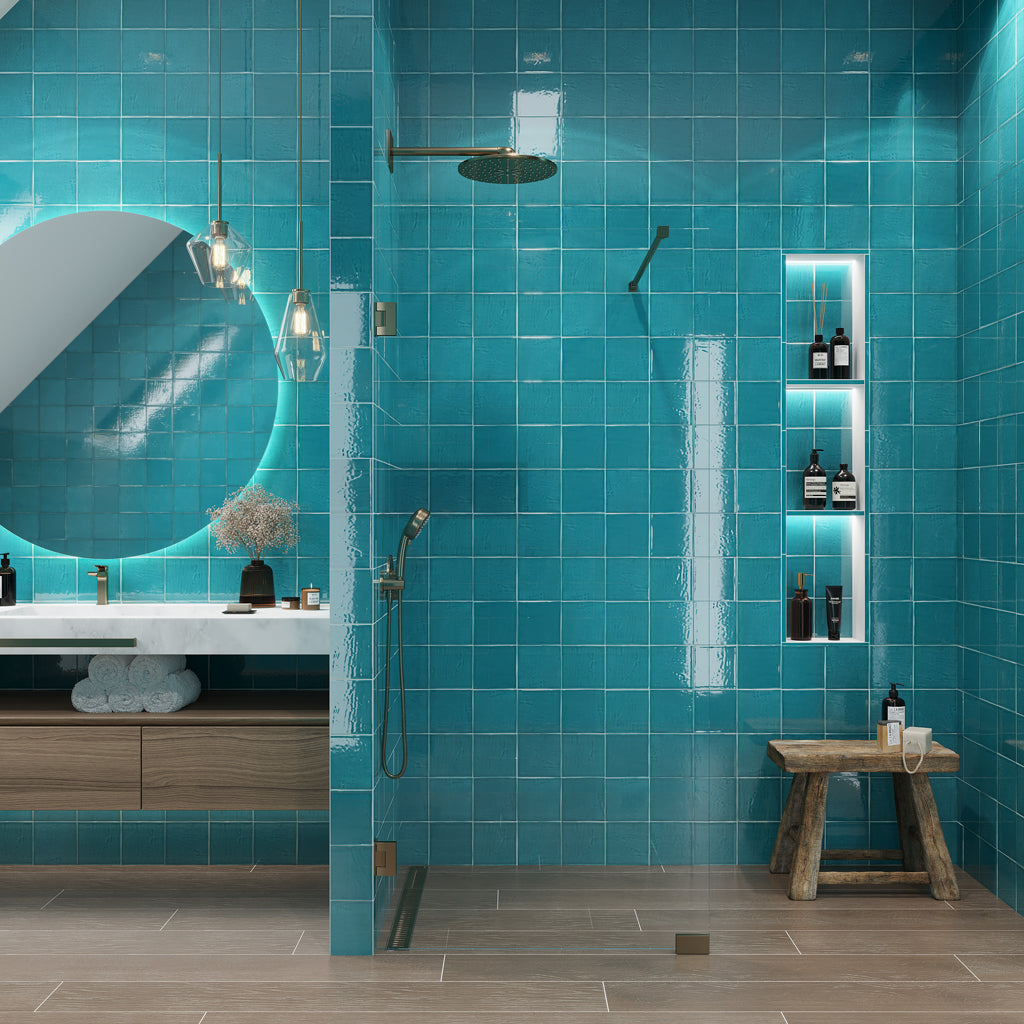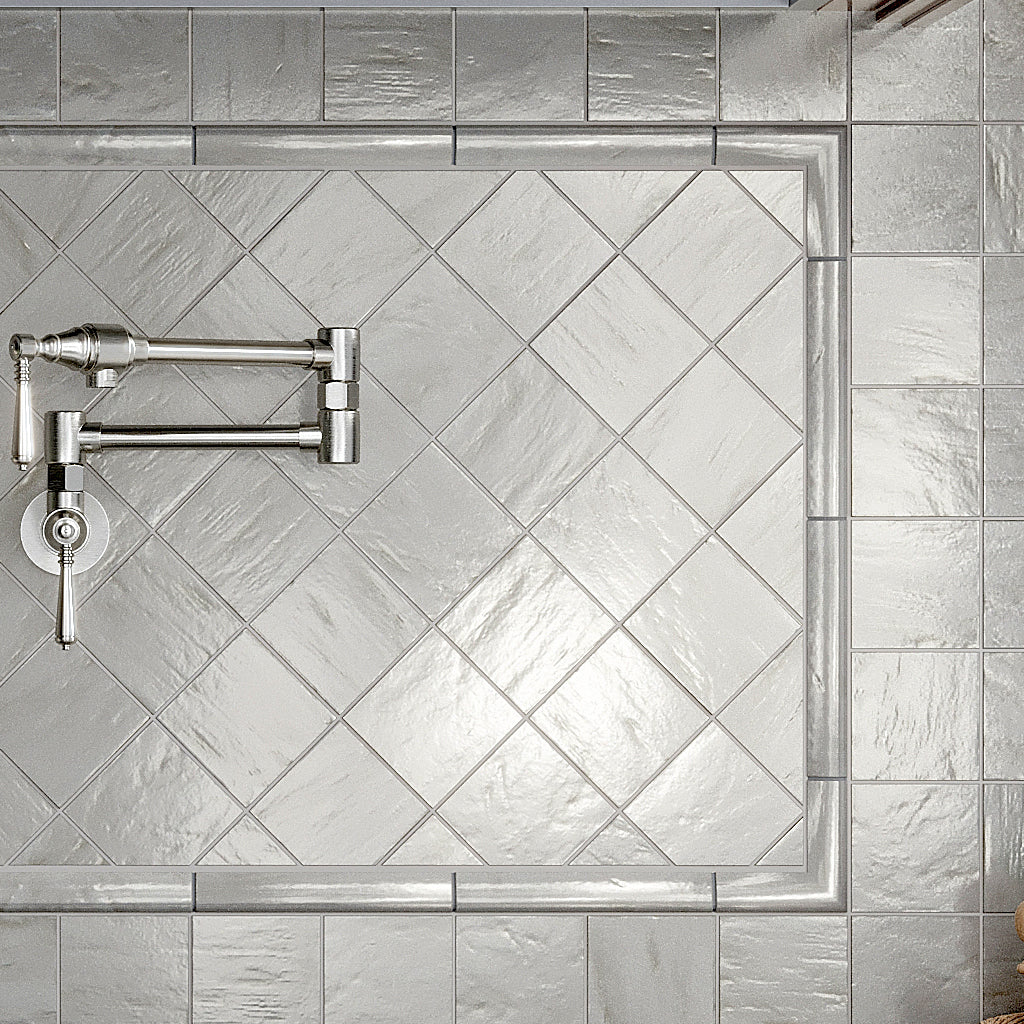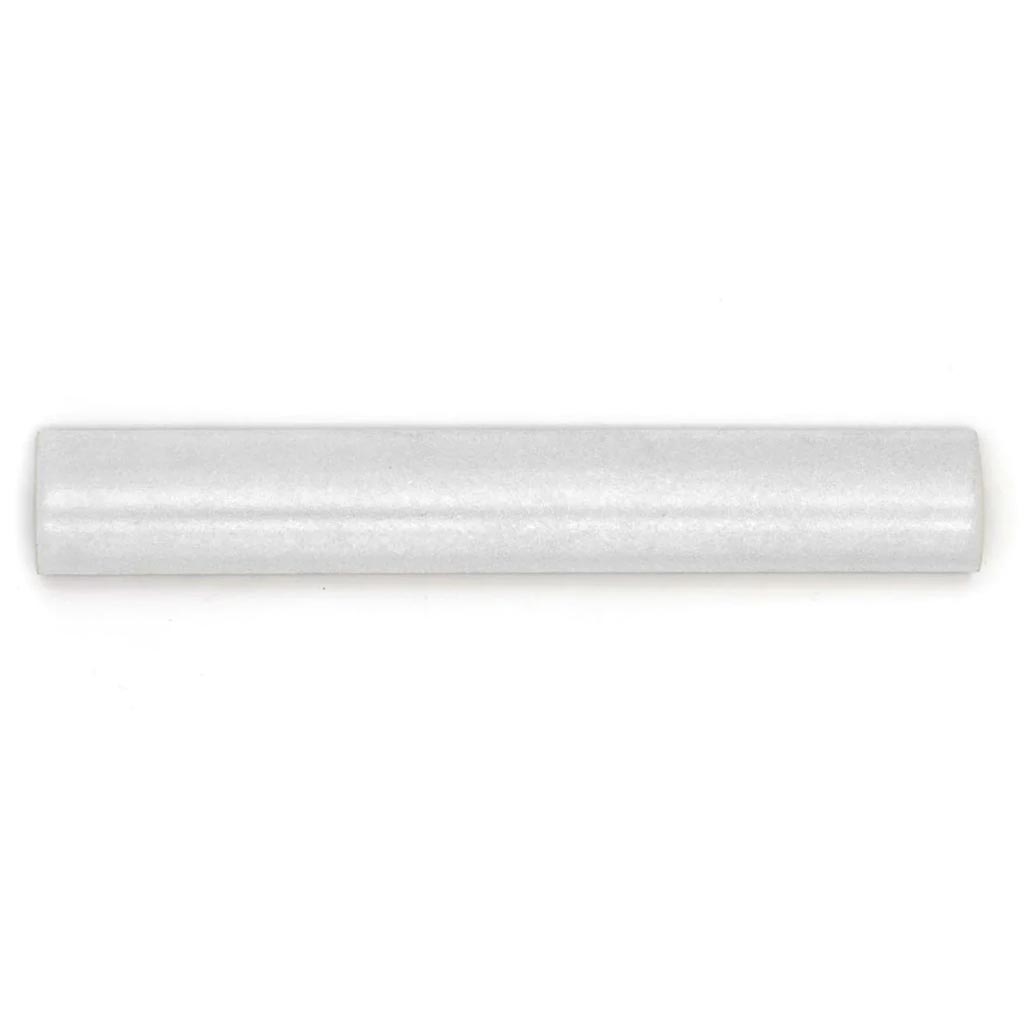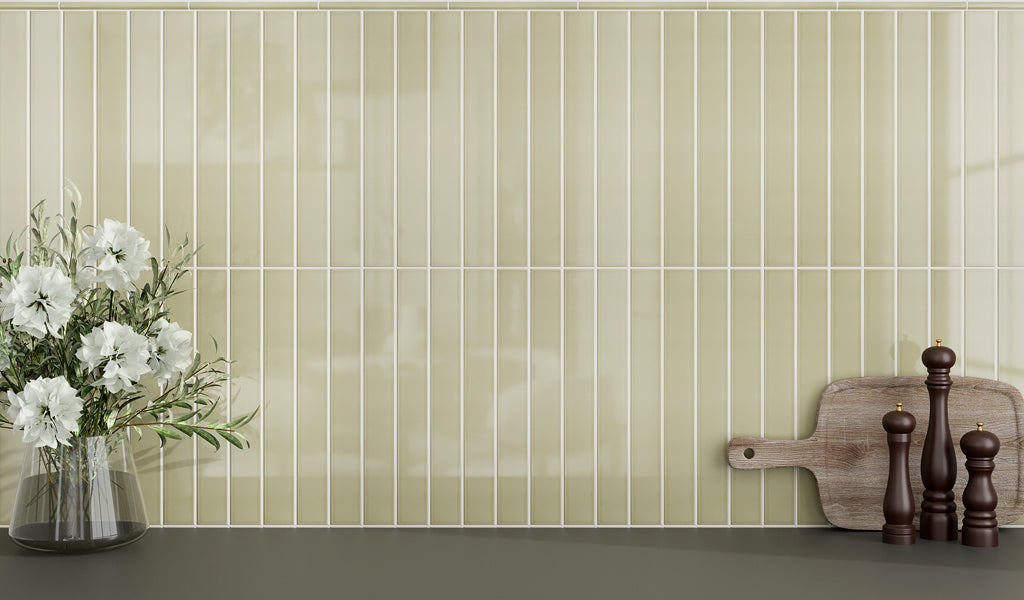Bullnose Tile: How This Trim Tile Perfects Your Tile Edges
Aug 04, 2025
What is the secret to a "finished" tile surface? Sure, great tiles, with perfect grout lines, but there is one detail that has the potential to enhance any tile project to a professional level: offering safety, longevity, and beauty. That detail piece is the bullnose tile.
Bullnose tiles are great for those places where the edge of a tile would otherwise be visible. This includes the outer edges of a tiled floor or a tiled backsplash where it meets the countertop. Plus, they can be a nice decorative element as a border or accent on any tiled surface.
This blog will provide detailed information about bullnose tile trim: what bullnose tile is, what bullnose tile is used for, how to install bullnose tile edging trim, where to use it, and what the benefits of using bullnose tile are.
What Is Bullnose Tile?
Bullnose tile is a type of trim tile that features one or more rounded, clean edges used to cover sharp or bare areas of the tile. The primary purpose of this border tile edge trim is to offer a smooth, neat, and safe transition wherever the tile meets another surface. Ideal on walls, floors, and backsplash. It prevents the pointed, rough edges of the standard tiles, which are usually unfinished and are susceptible to chipping and cracking.
Characteristics:
1. Rounded Profile:
The sole distinguishing characteristic of bullnose tile is its rounded edge. The rounded edge can be conventional, a small-rounded edge, or what is referred to as a "half round" or "full" bullnose with the entire curved edge, providing safety and a decorative form.
2. Available in Various Materials:
Bullnose tiles are available in ceramic and porcelain materials, complementing various design styles. Both materials are known for their flexibility, toughness, and easy-to-clean nature.
Why Use Bullnose Tile?
While some might consider bullnose tile as an extra expense or needless detail, its benefits play a big role. Below are the benefits of installing bullnose tile trim:
1. Safety:
-
-
Bullnose tile covers these exposed or rough edges, reducing the risk of cuts, scratches, making the space safer.
-
They are also ideal for high-traffic areas. Use them for a kitchen counter edge or shower niche - a curved edge is much more secure than a sharp, raw tile corner.
-
2. Appearance:
-
-
Bullnose tile trim offers a complete and refined look. It creates a crisp, intentional boundary, bringing focus to detail and craftsmanship.
-
It offers a seamless transition between the tile's surface, enhancing the overall design.
-
It helps in covering unfinished, untrimmed edges, which makes a beautiful, finished surface.
-
3. Protection:
-
-
Bullnose tile doesn't just look good; it actively protects your investment.
-
It preserves the base from moisture penetration. In wet areas like showers, bathtubs, and backsplash, untreated tile can let water seep behind the wall tile and cause damage to the foundation, such as drywall or cement board. This guards the surface and helps prevent mold and long-term damage.
-
-
-
Bullnose tile is robust, preventing flaking and breakage. The edges of the tiles are the most vulnerable to impacts. The curved profile of tile trim naturally offers better resistance to minor impacts or accidents and safeguards your main tiles from everyday wear and tear.
-
4. Ease of Cleaning:
-
-
The beauty of installing this bullnose tile trim is that it is easy to clean and maintain. Its smooth, blunted edges are simple to wipe down, and don't trap dirt, grime, or soap foam. With no tight corners, cleaning is easier and more effective.
-
Simply put, bullnose tile is a great option for anyone looking for a safer, quality finish that looks good and lasts longer.
Where to Use Bullnose Tile in Your Home?
The bullnose tile offers unmatched flexibility; it can be installed into almost any tiled surface where an edge needs to be covered. Here are some of the common applications where the tile trim is used.
1. Showers and Bathtub Surrounds:
In damp spaces, such as around bathtubs and showers, bullnose tile truly pops. It is ideal for running along the edges of a tub surround, framing shower niches, and finishing off the upper edges of tiled walls. In addition to making your bathroom appear tidy and well-maintained, it provides a water-tight sealed transition, safeguarding the structure behind your shower wall tile and ensuring that it remains in excellent condition for many years to come. Consider our White 1x8 Glossy Ceramic Bullnose Tile Trim for wet areas like showers and bathrooms, offering a stain-proof and water-resistant surface. It protects your tile from damage and chipping.
2. Countertops and Backsplashes:
Bullnose tile is an excellent option for finishing off the exposed edges of tiled countertops, giving the countertop a clean, polished appearance that’s easy to keep clean. It can also be used for smoother transitions, like where tile backsplashes meet a wall, or a full-height backsplash, ending just before the ceiling. Bullnose tile adds that last detail that makes the whole area complete.
3. Wall Edges and Niches:
Bullnose tile is perfect for finishing the edge of tiled walls—around a doorway, around a half-wall, or a wainscoting application. It smoothes out sharp edges and cleans it all up. It also works beautifully around window sills or as decorative niches, giving it a framed finished edge that looks nice, but also retains some coverage against chipping and wear over time.
4. Flooring Transitions:
A bullnose tile can be a clever way to finish areas where a wall or another type of flooring meets a tiled floor. Bullnose provides a more flawless, built-in appearance than an additional transition strip. By lowering minor height variations, it produces an even slope rather than a rough edge, which improves appearance and increases safety for passengers.
Creative Design Tips for Bullnose Tile
1. Frame Feature Wall:
Use bullnose tiles to create stylish frames around your feature walls. This technique highlights intricate patterns or captivating mosaics within the frame, drawing the eye and adding a polished, finished look to your design.
2. Mix Finishes:
Achieve a classic contrast by pairing matte-finished field tiles with glossy bullnose trim to add visual appeal and depth, making the tile surface more dynamic and engaging.
3. Use as Accent Strip:
Use bullnose tile trim as decorative accent strips; lay them vertically or horizontally.
4. Finish Curves:
Bullnose tile trims are ideal for curved surfaces, too. This excels at finishing arches, rounded doorways, or niche interiors, offering a pleasing edge.
5. Bold Edge Colors:
Make your tiled edges pop by using bullnose tiles in a contrasting color. This bold choice points out the tile's perimeter, creating a striking visual outline that defines the space.
Bullnose Tile vs. Other Edge Trim Options: Which Is Best?
There is no "best" situation. Bullnose tile is often a popular choice for its classic, integrated, and safe polished finish, considering that a seamless, traditional, or transitional style is required. It is effective at softening corners and integrating transitions.
For a modern, minimalist aesthetic, or high-traffic areas needing excellent edge preservation, metal profiles, like Schluter trim, will often be considered better. Pencil trims, on the other hand, are great for decorative edge accents or where an understated edge is desired.
The best option will always depend on the design intent of your project, the functional desires of the space (moisture resistance, durability, etc.), your budget, and whether there are trim pieces available that match the surrounding tile. For more understanding in detail read our blog related to tile edging options that offers alternatives to bullnose tile edges.
How to Install Bullnose Tile Edging Trim?
Getting bullnose tile installed properly is key to getting a clean, professional look. Here is a simple step for proper installation:
1. Prepare Your Surface:
Ensure that your surface for installation is clean, level, and plumb. A smooth surface prevents issues with your finished edges. You want a surface that is dry and solid with no debris on it.
2. Plan Your Layout:
Think about how you want to arrange your tiles. This will help in reducing cuts, allowing your bullnose pieces to be combined with the rest of your tiles to provide a pleasing effect.
3. Set the Tiles:
Apply thin-set mortar uniformly on the back and front of the bullnose tile (back-buttering). You can set your bullnose tiles before or after your field tiles. Check to ensure that they are perfectly parallel with your field tiles' height and straightness. Place spacers to ensure that you are filling the spaces with grout consistently.
4. Cut If Necessary:
Cut the bullnose tile with a tile cutter or wet saw. Be careful when cutting because of the curved edge.
5. Grout the Joints:
After the mortar dries, fill in the space with grout so it looks smooth. Select a grout color that matches your tiles so it appears cohesive. Immediately wipe off excess grout.
If you are doing a complicated project, hire a professional installer to get the best results.
What is an alternative to bullnose tile edges?
Bullnose tile trim is a popular choice because it is a polished, smooth finish, but there are other great options, too! For instance, a chair rail or a pencil trim can also offer a polished feel, depending on your tile type and design intention. But most often, bullnose wins for its versatility and ability to create an incredible look.
Final Thoughts
When preparing for your tile project, it's easy to get excited about the big-picture items like tile patterns, styles, or colours. It’s often the small detail that creates the magic, and one of the most important (and often underrated) is bullnose tile.
Bullnose is more than just aesthetics. It provides safety by hiding knife-like edges, gives your tile work a sleek, refined look, and defends edges from water damage and wear. Bullnose tile will be used to frame a shower, finish a countertop, and over the edge of a wall.
When you do tile, don't forget about the bullnose tile. It makes a big impression that can turn a decent tile job into a fantastic one, and will give your space a truly finished, professional appearance.
Frequently Asked Questions:
1. How do you finish tile edges with bullnose?
Finishing tile edges with bullnose is very straightforward! Just install the bullnose tile as the last piece on your edge, making sure the full edge is facing outward. It will finish the open edge of your main tiles and will give you a clean and completed transition.
2. How do you install tile edge trim on the wall?
Installing tile edge trim is just like installing any other tile. Use an appropriate tile adhesive (thin-set mortar) on the back of the trim piece, and tightly press it into the wall edge. Ensure it is level and aligned with your original tiles and use spacers to maintain even grout lines.
3. What angle do you cut bullnose trim at?
For most corners, you'll cut bullnose trim at a 45-degree angle to create neat notched joints, just like you would with molding. For external corners, you might also find specific "corner" bullnose pieces that save you from cutting and offer a perfectly bullnose finish.
4. Is bullnose tile trim necessary for all tile installations?
Bullnose tile trim covers the fine edges of the tile and offers an appealing look. It safeguards your tilework from pointy edges and chips while offering a neat, smooth finish.
5. Does bullnose tile work with mosaic tile installations?
Yes, Bullnose tile works with mosaic tile installation, offering a neat and solid edge that enhances the complex details of mosaics.
6. Can bullnose tile be used on floors?
Yes, bullnose tile can be used on floors, also for stair treads or transitions where a smooth, softened edge is desirable for safety and aesthetics.
7. Is bullnose tile more expensive than standard tiles?
Generally, no, the cost difference is very minimal. It’s worth it for the clean and finished look they give. Plus, they eliminate the need for extra trim materials, which can help balance the overall project cost.
8. Are there color and finish options in bullnose tile?
Bullnose tiles come in a wide array of colors, materials, and finishes to match or complement almost any standard tile. You can find them in ceramic and porcelain, with options ranging from glossy and matte, ensuring a perfect match for your design.
9. Can I cut regular tile to create a bullnose edge?
Yes, you can cut and shape a regular tile to create a bullnose edge, but it takes special tools, time, and precision. This is generally not recommended as it may spoil the professional look of real bullnose tile trims.












